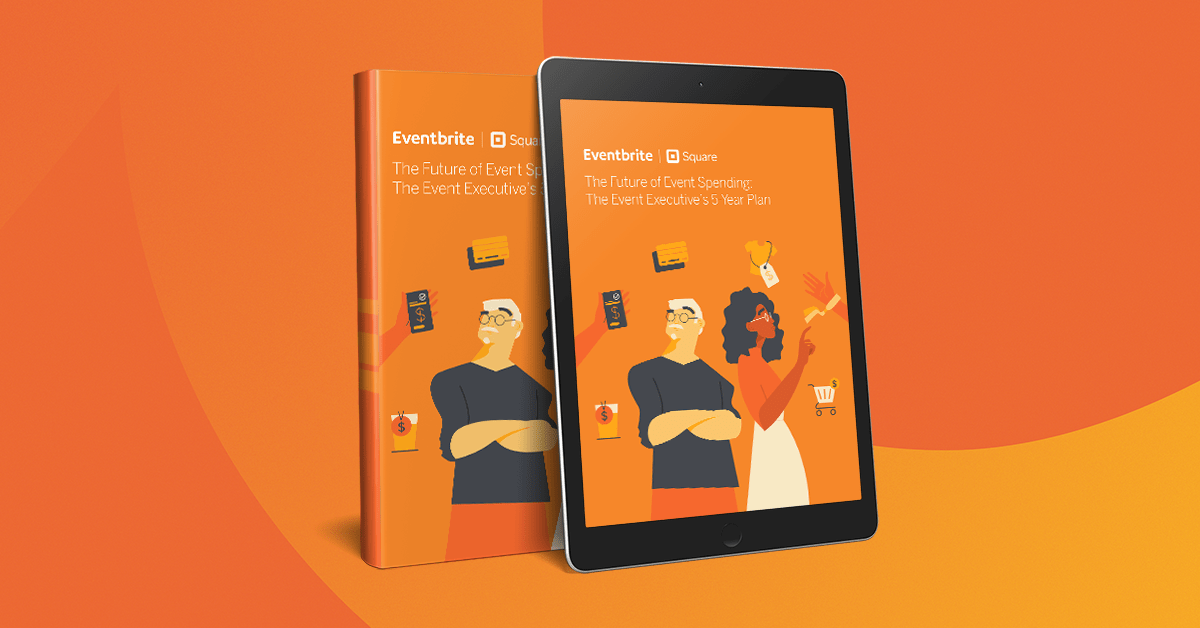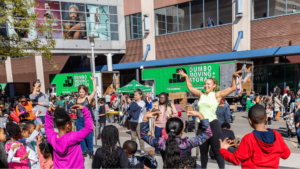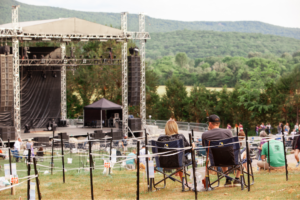This is a guest post from Mallory Russell, Editorial Lead at Square.
Your team spends a lot of time and energy convincing people to buy tickets to your event. But how much time do you spend thinking about driving attendees to buy more at your event?
At-event spending shouldn’t be an afterthought. You need to develop a strategy that drives spending (in concert with your pre- and post-event strategies).
But it’s hard to do that if you can’t measure your attendees’ event spending. And nearly 10% of event creators aren’t sure how much of their revenue comes from sponsors, vendors, or merchandise sales. Here’s how you can get more visibility into attendees’ spending habits now — and how you’ll be able to get even deeper insights in the future.
Now: Understand how attendees are spending money at your event
To learn how much revenue you’re generating at your event, you need to dig into the numbers. Review your event’s purchase data to create operational efficiencies, lean into activities that are driving growth (and away from those that aren’t), and improve your attendees’ experience (so they will spend more).
Here’s how to get started.
1. Implement the right technology
It’s difficult to track your attendees’ payments if you’re not using payment technology that enables you to do that. That means using hardware that accepts all sorts of payments — including mobile payments. (Accepting mobile payments can help boost your bottom line: Mobile wallet users report being more likely to spend more and more likely to tip.)
But your payment processing should also integrate with software that provides robust analytics. Use the same payment technology everywhere you make sales at your event, across vendors and merchandise. That way, all of your data is fed into one view, so you’ll be able to spot issues in real-time and see trends that can help you make smarter decisions.
2. Get visibility into your lines of revenue
Once you have your technology in place, you need to deep dive into your data and into each line of revenue.
First, determine how much of your overall revenue is coming from at-event sales. Then determine what are the strongest drivers of those sales.
Are there certain times where you see increased food and beverage sales? Are merchandise sales stronger in some locations than others? What inventory is driving sales (and what is not)?
Answering those types of questions can help you develop tactics to either capitalize on — or counteract — those trends. For example, if beverage sales increase midway through the event, you might think about setting up carts or kiosks at that point so you can serve more people, faster.
3. Get to know your attendees
Understanding your data can help you create operational efficiencies and take advantage of strategic opportunities. But it can also aid you in creating a stellar attendee experience.
In the example above, we talked about how pinpointing when beverage sales increase and providing more opportunities to buy leads to more sales for you. But more beverage vendors also means shorter lines, which improves the experience for your attendees.
If you have the right payments technology, and your attendees are paying with cards or phones, you can also start to construct views into what each of your attendees is purchasing. As you dive into purchase behaviors, you’ll also be able to customize promotions and marketing to your attendees.
In the future: Get a full view of your attendee spending
But at-event spending is only one piece of the pie. When you combine that data with other data collected before and after the event, you can really start to optimize your event strategy to maximize both revenue and attendee experience.
It’s important to get a handle on what spending at your event looks like today because in the next few years we’ll see massive shifts in how it can be measured. Here’s a sneak peek at our vision for the future:
1. One aggregated view of revenue
In the future, our aim is to aggregate your sales from websites, mobile apps, and onsite purchases into one view, enabling you to track the relationship of individuals and personas with your brand over time in order to better strategize.
“As the lines that separate online and offline business fade, we [need to] simplify all aspects of commerce, so [event creators] can stay focused on their core business of powering great live events,” says Alyssa Henry, Seller Lead at Square. For the first time, you’ll be able to use one system to see how every aspect of your business is performing.
“Our goal is to provide organizers a single view of all ticket, food and beverage, and merchandise sales,” says Carl Perry, Head of Developers Platform at Square.
2. Better insight into your attendees’ behavior
Once your pre-event data (i.e., marketing and ticket sales) integrates with your at-event data (i.e., merchandise and vendor sales), you’ll be able to see each interaction an event-goer has with your brand. Online and in person, no matter what the purchase is or where or when it takes place, you’ll know.
By bringing all your data together, you get a complete picture of where and how attendees make their purchases. Then, says Perry, “Creators can make more informed decisions regarding how to better engage new and previous attendees and provide a more direct and tailored experience for all their customers.”
3. Predictive analytics
Once all of your data is in one place, you’ll be able to use it to help predict future performance. These predictive analytics will be a powerful tool for event creators, allowing you to better price tickets and stock food, drinks, and merchandise based on expected demand. (And it will provide a better experience for attendees, who can always find what they want at the right price.)
In terms of ticketing, predictive analytics will allow you to zero in on “perfect pricing” — the sweet spot at which attendees will buy tickets until they sell out. And better analytics will also help event creators precisely predict food, drink, and merchandise demand in order to stock exactly what they need.
If you’re sensing a trend here, it’s this: when it comes to the future of event spending, what’s good for attendees is good for event creators. And while new technology is coming that will make this easier than ever, that doesn’t mean you have to wait to start benefiting from more access to payments data and analytics.





